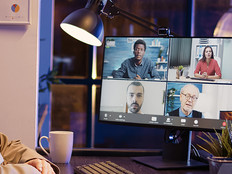Review: Cisco TelePresence System SX20 Quick Set
Cisco’s TelePresence System SX20 Quick Set provides nearly everything an organization needs to bring high-definition video conferencing to offices or conference rooms at a relatively low price.
Part of the Cisco telepresence product line, the SX20 Quick Set can be set up in less than 30 minutes. All it requires is a high-definition display with an HDMI input, and an Ethernet connection with sufficient bandwidth.
The SX20 works with Cisco’s other telepresence systems, including large whole-room installations common to large organizations. It will also communicate with Cisco’s Jabber video software that runs on some smartphones and tablets.
The kit includes four components: a control unit, camera, echo-cancelling microphone and remote control. The control unit connects to the camera through a special cable that delivers video and power, and also connects to the display and network. A remote control offers the only available means of operating the SX20 system.
End-User Advantages
Users will find it a cinch to conduct video conferencing sessions with the SX20.
Most operations are controlled by pressing the Home button and choosing an activity from an on-screen menu. Options include positioning the camera, aiming the lens and zooming. The Call function places video calls. Users can type in video conferencing addresses using the keypad or select them from the address book. Once an address is entered, simply select a menu option to place the call.
The video is clear and the audio quality is high enough that it overcomes most of the problems of low-end video conferencing, such as Skype or FaceTime. The images displayed are true high-definition — either 1080p or 720p, depending on the available bandwidth. Users can feed video data into the control unit to show a presentation and an image of the presenter on the screen at the same time.
Why It Works for IT
IT staff will find the SX20 appealing because the video conferencing system doesn’t require much involvement on their part. Once the product has been set up, all that’s needed is a wired Ethernet connection. The IT department can manage the telepresence system remotely by logging in to its built-in web interface, which controls virtually every aspect of the SX20.
60
The number of frames per second supported by the SX20 running in 1080p video mode
The most common task for getting the telepresence system to run well is to select the communications protocol — either SIP or H.323. Administrators may also need to choose a lower bandwidth than the standard default, which is 6 megabits per second. Beyond that, most of the setup is automated through a tool that Cisco provides, but which was not available for this review.
Disadvantages
The data stream used by the SX20 is very sensitive to packet loss. As a result, the video conferencing does not work well on wireless networks. Tests with a high-speed 802.11n network showed dropped frames that made the picture freeze and images that were slightly less sharp than they would have been otherwise.







